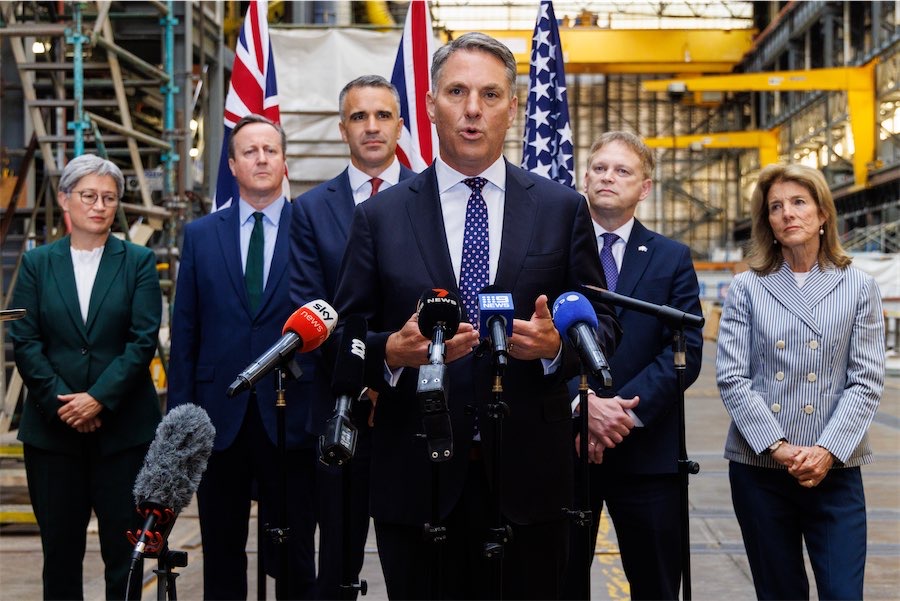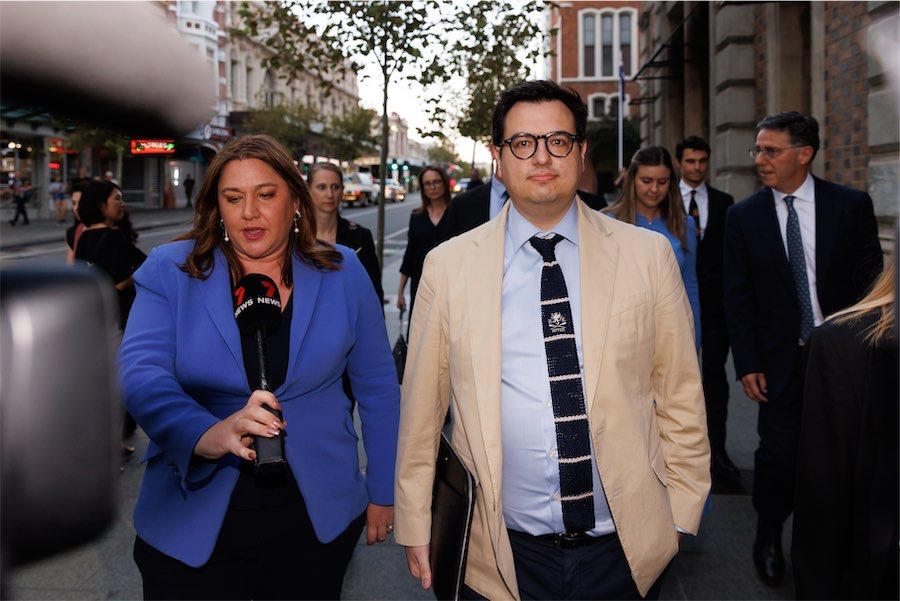
By Tess Ikonomou and Andrew Brown in Canberra
Defence will get an extra $50 billion over the next decade as part of a shake-up of Australian forces, the biggest increase in military spending in more than 50 years to meet new threats.
Unveiling a national defence strategy and investment program in a major speech on Wednesday, Defence Minister Richard Marles outlined an increase on spending on ships and ship building as part of what he said was the largest growth in military spending since 1949.
“History will judge us not by what we say, but by what we do, and you can only do if you properly fund,” Mr Marles told the National Press Club.
“Australia no longer has the luxury of a 10-year window of strategic warning time for conflict.”
The rise of China and its growing influence in the Asia-Pacific region along with other threats has created the most challenging strategic environment since World War II.
The strategy follows the release of a defence strategic review a year ago, which found the Australian Defence Force was no longer fit for purpose.
The spending boost will provide an additional $5.7 billion over the next four years, and will take defence funding to 2.4 per cent of GDP by 2033/34.
The government will make cuts to other defence programs under a $22.5 billion “reprioritisation” over the next four years to help pay for drones and long-range strike missiles.
A further $1 billion will be spent in the next four years on long-range missiles.
Annual funding for defence will surpass $100 billion in a decade’s time.
The strategy also calls for a widening of the eligibility criteria for the defence force to bolster recruitment.
This includes potentially allowing non-Australian citizens to sign up, and encouraging defence personnel to serve longer through retention initiatives.
Mr Marles said while Australia would play its “global part” in the world, the bulk of the focus lay in the immediate region, with significant strategic competition.
“This competition is accompanied by an unprecedented conventional and non-conventional military build-up in our region, taking place without strategic reassurance or transparency,” he said.
The funding boost will come at the cost of previously planned upgrades to defence facilities in Canberra, worth $1.4 billion, which will instead be reinvested in bases including in northern Australia.
The acquisition of two large support vessels for the Navy will also no longer be carried out, due to them being “no longer a priority”, saving $120 million.
Opposition defence spokesman Andrew Hastie said for the defence minister to pass the test of leadership, the new plans “must be more than just vague language, vague promises and vague time frames”.
“There must be real money, real commitment and real leadership,” he said.
“Richard Marles must be honest with the Australian people about the threats and challenges we face.
“This must be matched with a meaningful increase in defence spending and a clear strategy – real money, and a real direction. These are the metrics that count.”
Who can be trusted?
In a world of spin and confusion, there’s never been a more important time to support independent journalism in Canberra.
If you trust our work online and want to enforce the power of independent voices, I invite you to make a small contribution.
Every dollar of support is invested back into our journalism to help keep citynews.com.au strong and free.
Thank you,
Ian Meikle, editor




![Teacher Vanessa Jones has been living in Higgins since 2001, and while she loves the area, she says she is “fed up” with the neglectful ACT government.
The Higgins shops have been completely abandoned, says Vanessa, preventing the opportunity for residents to have a community-centred space to socialise.
They only received bins nine months ago, she says, and requests for a water station and repairs to the bus station have gone unanswered.
“It’s very, very slow,” says Vanessa.
“I asked for the zebra crossing on Fullagar [Crescent] to be repainted, and we had to wait about six or nine months.
“That’s just such a long time… we pay a lot of rates.”
Vanessa says assistance from the government only seems to go to communities with time-rich and assertive communities, leaving places such as Higgins, where the majority of households have both adults working full-time and English may not be the first language of the family, at an automatic disadvantage.
“If you’ve got two people working, paying a mortgage, raising two or three kids, they don’t have the time,” says Vanessa.
Vanessa says the lack of attention quieter places such as Higgins is receiving is starting to look a lot like favouritism.
Read the full article on our website citynews.com.au
#canberra #canberranews](https://citynews.com.au/wp-content/plugins/instagram-feed/img/placeholder.png)
Leave a Reply